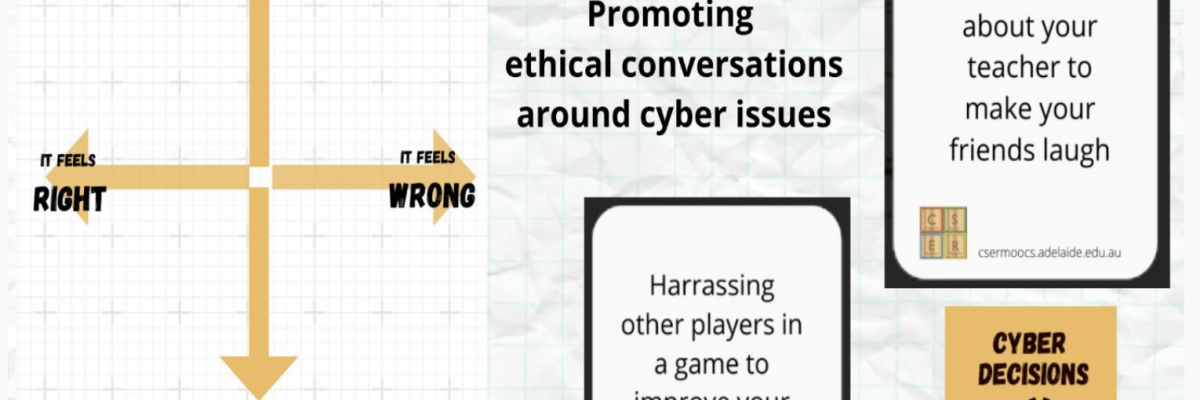Cyber security activities in high school
There are many interesting activities that you can use to develop cyber security and awareness knowledge and skills with high school students that align to the Australian Curriculum: Digital Technologies. In this post, we highlight a few of our favourites featured in our MOOC.
Connecting with networks
A computer network is a web of interconnected devices including computers, printers, mobiles, tablets and modems that use communication protocols over digital networks to communicate with each other.
In Year 7 and 8, students analyse the properties of networked systems and their suitability and use for the transmission of data types. They acquire, analyse, validate and evaluate various types of data, and appreciate the complexities of storing and transmitting that data in digital systems. To gain hands-on experience, students can use a BBC micro:bit to simulate a packet switching network, using Morse code as a metaphor. This lesson was developed by DLTV for the Digital Technologies Hub.
Race to re-build blockchain
In years 7-10 students investigate and analyse aspects relating to data transmission and security across networks and critically reflect on privacy and security requirements, risks and protocols [ACTDIK023, ACTDIP031, ACTDIP036, ACTDIP042].
Blockchain is a cutting-edge security method commonly used in cryptocurrencies, such as Bitcoin but it has been said to have great potential for uses such as tax refunds, medical records, real estate purchases and more. Blockchain is a cryptographic message that records a permanent, transparent digital ledger of transactions. Hashing is a fundamental part of understanding how blockchain works as it uses complex algorithms to generate hash codes for each block which are very difficult for someone to break into and edit.
In our secondary years' cyber security MOOC we present an activity in which students work in teams using mathematical problem-solving to figure out hash numbers for blockchain blocks using a secret hash algorithm provided by the teacher. By figuring out the hash numbers, they can rebuild the transactions in the correct sequence, with the aim to be the team who wins the race! From here students can go on to learn about how the complexities of blockchain as a security method, the risks involved and potential uses for it in society.

Developing an ethical lens
In years 7 and 8 students are expected to apply ethical behaviours, identifying cultural considerations when participating in online communities [ACTDIP032]. By years 9 and 10 there is a progression to follow protocols, and to influence and develop their own guidelines for facilitating an ethically considerate environment [ACTDIP044].
Based on an activity on the Thinking Hotspots routine by Project Zero, we present an activity in our secondary years cybersecurity MOOC in which students use our ethical dilemma cards as a way to critically think about ethical issues and to engage in analytical discussion and reflection. Students pick a card, discuss the issue and then place the card on the provided quadrant template. Join the MOOC to download our cards and try the activity with your students!

If enjoyed some of these activities, please join us in our secondary years MOOC! We present the key ideas and fundamental concepts to help you implement these activities in the classroom, as well as many more activity ideas for you to try! If you are teaching primary years students, we have a course on cyber security and awareness just for you! Teachers who complete the course will receive a certificate of completion.

